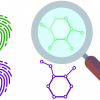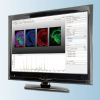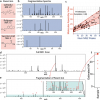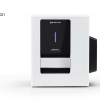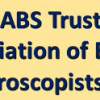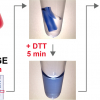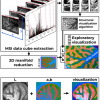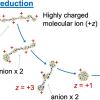Mass Spectrometry News
By combining mass spectrometry with laser spectroscopy and simulation techniques, researchers have revealed key differences in the fragmentation of dipeptide biomolecules with different chiral structures.
Shimadzu has appointed Jürgen Semmler as the new Managing Director of its European organisation. He previously headed Shimadzu Deutschland since its foundation in 2006.
A new algorithm, MolDiscovery, uses mass spectrometry data from molecules to predict the identity of unknown substances without the need for a spectral database.
JEOL and SCiLS have concluded a non-exclusive, worldwide distribution agreement for SCiLS Lab MVS software.
IonSense has appointed Jeffrey Zonderman as President and Chief Executive Officer.
A mass-spectrometry-based system capable of identifying complex molecular signatures could aid in the search for alien life in the universe.
The bone collagen peptide fingerprinting technique, Zooarchaeology by Mass Spectrometry (ZooMS), is increasingly being used to identify ambiguous or unidentifiable bone fragments.
Analysis of rare earth elements by mass spectrometry has been used for the first time to find human activity in a prehistoric cave.
SCIEX will offer their customers Waters UPLC instruments as part of an LC-MS package.
The InfinityLab LC/MSD iQ and the Ultivo Triple Quadrupole LC/MS systems have earned the Accountability, Consistency and Transparency label from My Green Lab.
Multi-spectroscopy analytical approach provides important information for preservation of Picasso paintings.
Shimadzu has received two “Red Dot” design awards for their MALDImini-1 and iMScope QT, a MS and optical imaging instrument.
Applications are invited for two awards administered by the ABS Trust.
A new NALDI-TOF-MS technique detects minute particles of plastics in snow, rain and even soil.
Researchers at the University of Surrey have found that LC-MS and PLS of non-invasive skin swab samples may be enough to detect COVID-19.
Mass spectrometry can be used to identify Parkinson’s based on compounds found on the surface of skin. The findings offer hope that a pioneering new test could be developed to diagnose the degenerative condition through a simple skin swab.
A novel gel electrophoresis technique has reduced the time for the sample pretreatment of trace marker proteins derived from clinical samples from around 20 to 5 hours.
Scientists from the Skolkovo Institute of Science and Technology (Skoltech) have proposed a mass spectrometry imaging (MSI) method making use of the unique features of human vision.
Kanazawa University scientists have used computer simulations of charged molecules to help improve the accuracy of mass spectrometers. By understanding the collisions between ions that reduce excess charges, this work may lead to more sensitive radiocarbon dating and medical testing.
A research project at the Institute for Global Food Security, Queen’s University Belfast is to use mass spectrometry to tackle bovine mastitis and reduce the use of broad-spectrum antibiotics on dairy farms.


